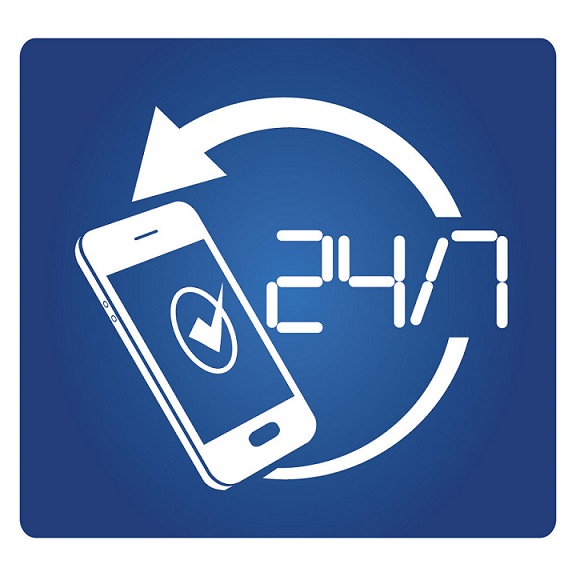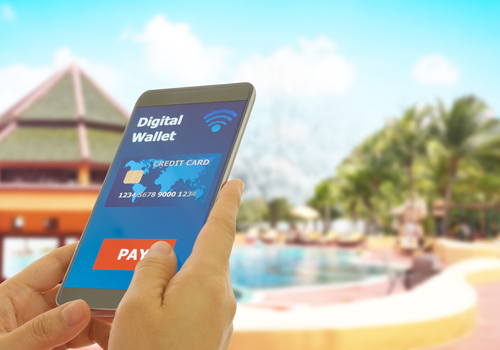Why Businesses Roll Out Mobile Apps Rather than Websites in 2024
Mobility is in a boom phase now, with more number of people accessing the internet using mobile devices as opposed to desktops and laptops. While rolling out responsive websites, where the design of the website gel with the screen size of the app has been a time-tested way to cater to mobile users, of late more and more businesses are forsaking their website and launching mobile apps instead.
Mobile Apps are Always Available
Unlike a website that must be accessed through a browser every time and requires an internet connection to load, a mobile app, once installed, remains in the device, and the user can access it anytime with just a click. The performance of the website depends on the strength of the internet connection, whereas an app may be accessed fast even without an internet connection. Many features and functionality of the apps are accessible offline, with the app updating itself in the background automatically whenever the user goes online. Mobile websites which use caching function to load websites without an internet connection offer very limited functions.
Also, since the mobile app is downloaded to the smartphone, users are more likely to open the app than taking the trouble of searching and entering a competitor’s web page. The presence of an app on the device has a strong influence on retaining the brand name and image on the user’s mind. Mobile app icons double up as ad-banners, and users are reminded of the brand associated with the app even when they do not use the app.
Apps are Technically Superior and Give a Better UX
Web designing has come a long way ever since the days of working with tables and flash, yet with all the technological advancements in web designing, mobile websites still are almost wholly dependent on browsers for even the most elementary functions. For instance, without the browser’s address bar, back button, refresh button, it is virtually impossible to open and navigate a web page.
Mobile Apps are free from such dependencies. Developers have a free hand designing apps with elaborate functions and co-opting advanced gestures such as swipe, drag, pinch, and more, which are far more powerful and enhance the user experience compared to the limited browser options.
Apps are inherently faster as well. Mobile websites depend on javascript code to perform most functions. The framework used by mobile apps run about 5X faster than javascript code!
Browsers have been adapted to the mobile space from desktops, and apps are integral to the mobile devices, and the difference in performance is obvious.
Mobile Apps Offer Scope for Deep Personalization
Users pampered with personalized content are more likely to convert, and apps are deeply personal compared to a website. Mobile apps have the capability to offer highly targeted content and utility, to specific users. Mobile websites, in contrast, reach out to a diverse set of audience and are more of a “one-size-fits-all” thing.
Personalization goes much beyond offering tailored communication to users based on interests, location, and usage behavior, though. Personalization also means making the user experience delightful, based on the profile and preferences of the user. Apps store the preferences and settings made by the user and apply the same automatically whenever the user opens the app. With a website, either the user must log in every time, or state their preferences afresh every time they access the website.
A mobile app also offers the freedom of experimenting with new branding style to users, quite distinctly from the branding style of the browser, which is virtually the same for everybody. While microsites work on a similar design personalization concept of apps, it has not yet caught on.
Apps Leverage the Smartphone’s Capabilities
Mobile devices have become popular not just because of its portability, but also because it packs in many intuitive features, such as camera, GPS, Bluetooth, gyroscope, contact list, accelerometer, compass, and other capabilities, many of which are not found in desktops and laptops or are cumbersome add-ons.
However, such functionality is useless unless there is a viable method to use it during the course of work or activity. Websites, no matter how optimized it is for the mobile, are either outright incapable of leveraging such functionality, or the integration is clumsy. Mobile apps, on the other hand, seamlessly integrate such features to offer added functionality and possibilities for users.
The effective and intuitive use of such features enhances the user experience, reducing the effort users would otherwise have to make. For instance, a banking app could easily allow the user to take a selfie, leveraging the smartphone’s camera, whereas a browser would require the user to painstakingly scan and upload an image. The swipe gesture allows users to browse pages faster compared to using the back or forward button of the browser.
Apps Facilitate Push and In-App Notifications
In today’s hyper-competitive world, marketers have no option but to reach out and engage with their prospects and customers on a proactive way.
The much used and abused email, the default way of online communication, has now lost its effectiveness, with users more likely to send promotional emails straight to the junk folder. Businesses now seek to counter the ever-dropping open rates and click rates through mobile app notifications.
Apps have the capability to generate both push notifications and in-app notifications, offering enterprises viable means to reach out to their users in a less intrusive manner. Users receive push notifications on their smartphones regardless of the activity they indulge in on their mobile devices. In-app notifications come when users open and engage their apps. Such notifications are instant and deliver high click-through rates.
Marketers looking to increase conversions find mobile apps a handy tool to acquire both top-of-the-funnel (ToFu) and bottom-of-the-funnel (BoFu) users and push users down the conversion funnel. For instance, many ToFU users are likely to download intuitive utility apps, and once they download, the marketer can leverage notifications to nurture them into BoFu leads. Likewise, many BoFU users are likely to download eCommerce apps, making them prime candidates for conversion.
Businesses with large wallets may continue with both mobile websites and app, catering to all customers. However, in today’s highly competitive environment with wafer thin margins, most companies would have to prioritize on what satiates their customers the best, and here apps take a clear lead over mobile websites. About 85% of customers prefer mobile apps over websites, about 55% of customers see apps as more convenient compared to mobile websites, 48% of them see apps as faster, and 40% of them find apps easier to browse.
The trick is to deliver highly intuitive and well-designed apps that add value to a user. This requires the expertise of specialists focused on the task and who have horned they skilled developing and implementing several cutting-edge mobility projects.
Stay up to date on what's new

Featured Blogs
Stay up to date on
what's new

























































